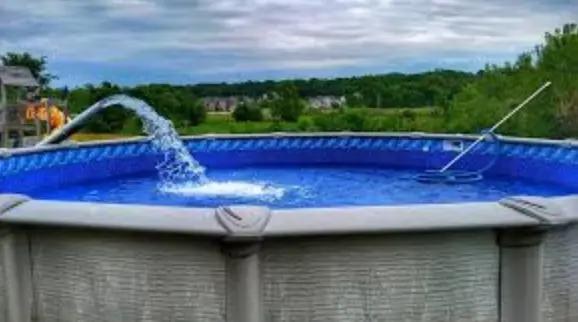
What to know before installing a pool
Nothing is sweeter than jumping into a swimming pool on a hot summer’s day. Here’s what you should know concerning installing your own pool before making the leap

While there are so many appealing factors that accompanies owning a pool, it’s not all plain sailing. Pools gives you the opportunity to have that resort-at-home and vibe without the need to travel and becomes a natural target for summer entertainment. You may see yourself with more friends than you never knew you had on hot days. It’s also an opportunity to exercise and teach your children to swim.
There are plenty of stylish options that have entered the market in recent years, providing a wider choice of cost and styles. There are also plenty of anecdotal reports of parents saying their teens spent more time at home with a pool than those without.
However, regular maintenance requires time and money. Improper upkeep can lead to an unhealthy swimming environment, so it’s important to get the chemical and chlorine balance correct. If you don’t have time for pool maintenance, you can hire a valet company to do it for you, which is a regular, added expense.

Pool covers can also disintegrate over time and filtration systems may need servicing or upgrading. If you live on a steep site, it’ll need to be levelled, which can be costly; an engineer and landscape architect can aid you with this. If you want to use your pool year-round, you’ll need to consider a heat pump or solar power system for heating, which come at a cost.
Safety risks require the homeowner to be vigilant, especially with children nearby. While pools hold resale appeal, you may not receive what you spent installing it; that will depend on market conditions at the time.
Types of pools
Fibreglass
The ease of fibreglass pools and their swift installation – usually one week – is appealing. Check the warranty because some brands offer a lifetime guarantee on the shell. Some companies, such as Ultimate Pools, offer modern colours and shapes, and their pools are compatible with salt, magnesium and low-chlorine water treatment systems. Although fibreglass can have some customisation at a cost, they are more limited by shape compared with concrete pools. Ultimate Pools range starts at $48,000 for a 4.8m pool, and can range up to 11.8m. They can custom make pools as large as 30m. There are smaller options, such as plunge pools, which suit hard-to-access outdoor areas. Ultimate Pools offer plunge pools ranging from 2.8m to 6m, priced from $35,000.
Natural
If you want to avoid chemicals opt for one with a natural focus. The water is treated biologically through a biofilter using no chemicals or chlorine. Microorganisms in the filters mineralise organic content to lessen the water’s phosphorous matter. As a result, the algae lack the nutrients they need to survive.
Concrete
People are drawn to concrete pools for their longevity and flexibility of style. These can be tailored to clients’ specific tastes with regards to shape, size, depths, colours, features. They last a long time and can be refurbished with new coping stones, tiles and plaster to change the appearance when the pool begins to show age at around 15-20 years. “Concrete pools are more eco-friendly,” says Matt Jillings of Watchman Pools. “There’s already enough plastic on this earth, why add more with a fibreglass or vinyl-lined pool? Our pools are custom built to the clients’ requirements,” he says. “Depth, size, shape are only limited to space and budget.”
Concrete pools tend to be priced at about $80,000 upwards depending on the design and accessories.
Tiny pools
Even if your home is on a small section, that doesn’t mean ruling out owning your own pool. Small-scale pools, such as those offered by New Zealand’s Tiny Pools, give the chance to enjoy a pool size that works for mini sections. The bonus is you’re dealing with a lower price point than average-sized pools.
The seeds for Tiny Pools were planted when owners Bryn Williams and Craig Jones worked as landscapers and spotted a gap in the market for small pools.
“He spoke to clients who often said they would love a pool but couldn’t either afford to install one or thought they did not have the space,” Bryn says. “Now our clients are delighted when they find out that we can deliver an affordable pool that fits their section.”
Ideal for households that aren’t interested in swimming lengths or a large size for entertaining a large family, Tiny Pools still cater to a range of depths and finishes and are ideal if you’re looking to support a New Zealand pool company.
A small pool can have a big impact on a beautiful outdoor area, enhancing its use and visual appeal amid lush planting. Popular size styles from the Tiny Pools range are The Manu, which is a circular 3.7m x 1.8m deep, and The Classic, which is a rectangle pool 4m x 2.3m by 1.6m deep. Both start from $35,000.
The main difference between Tiny Pools products and larger, more conventional pools is their affordability due to lower installation, running and maintenance costs. Their ease and flexibility of how, when and where the pools can be installed is an appealing factor.
“They can be installed in small areas either in the ground, half in the ground or above ground,” Bryn says. “Versatility allows clients the option to install a heat pump set up that can heat the pools up to 40°C for year-round swimming.”
They’re viable options for everyone from families with young kids to couples with no children and grandparents installing pools for their grandchildren to swim in.
Their success lies in them being affordable and flexible in sizes, shapes, finishes and installation options. “Installation is quicker and less disruptive than installing a large pool and can be installed in smaller areas while still delivering all the fun of that can be had in large pools.”
With a new Tiny Pools showroom having just opened in Mt Maunganui, it’s a place for people to come and see how it all comes together. “One of our favourite parts of having a showroom is that you can get a sense of how big our Tiny Pools actually feel,” Bryn says. “We have the Manu and Classic on display where you can jump inside and everyone’s first comment is always on how big the pools actually are when they see them.”
Other considerations
• Be clear about what’s included and excluded in the pool build – does it include water being tanked in? Will the pool company install tiles where you want them or just above the pool’s rim? Is any necessary excavation outside the pool company brief? Check what contractors take care of and what you are responsible for.
• Think about where the pool pump and pool shed will be. Your pump can be noisy, which isn’t relaxing when you’re sunbathing poolside.
• What type of pool cover meets your requirement – manual or automatic?
• What sized pool is best for your outdoor area? Ensure your pool is in proportion to this area and your house.
• Study where the sun travels summer to winter.
If having a pool close to your house means it’ll be in the shade, push it out further towards the boundary. “Pools closer to the house are used more. Pools in shaded areas require more heating. Pools under trees require more cleaning,” Matt says. You may feel more comfortable having the pool in sight of the house, especially if you have young children. Try and avoid a wind tunnel, it will make relaxing by the pool uncomfortable.
Will it add value?
Despite many of us buying smaller sections, a pool increasingly holds appeal, yet there’ll always be a section of the market who are deterred by a pool’s upkeep. “There was a time when a pool didn’t add much value to a home and was considered a hindrance,” says Ilse Evans, real estate agent at Harcourts. “But now, home buyers ask if properties for sale have a pool or have room for a pool or if there are any pipes that would prevent a pool being installed. There is more demand due to what I believe is climate change and the warmer summers. When I have families looking for family homes, what I hear from them is if there isn’t a pool ‘Is there enough space for a pool and any obstructions to that?”
Council requirements
• Pool regulations are the same across the whole of New Zealand, not just Auckland.
• If the pool contains less than 35,000 litres of water, then it does not require a building consent, but that covers the structure of the pool and not the fencing.
• The pool fencing (or barrier) will always require a building consent, regardless of size.
• Although the pool, due to its size, may not require a building consent it still needs to comply with all relevant aspects of the Building Code with regards to structure, drainage and durability.
• The pool will also need to adhere to any local Unitary Plan or District Plan rules, which can differ between territorial areas.
• The majority of pool fencing needs to be 1.2m high with no climbable object within a 1.2m radius of the top of the fence.
• You can use a boundary fence as a barrier but there must be a clear drop on the pool side of 1.8m, with a 900mm no-climb zone at the top of the fence. The pool must also be sited at least one metre away from the fence.
• All gates must open away from the pool and be self-closing and latching.
• You can use windows and doors of the house as a barrier, but windows opening into the pool area must be restricted to a maximum of 100mm opening. Doors (including ranch sliders) must be self-closing and latching or have an audible alarm fitted.
• The area bounded by the pool fence is the ‘Immediate Pool Area (IPA)’ and you are only allowed to have pool-related things in this space, such as sun loungers, outdoor table and chairs. The IPA must also be limited in size (immediate), so having a whole backyard an IPA is not allowed and you cannot use the pool area as a thoroughfare to other areas not related to the pool.
• Once a pool has been put in and completed, the pool barrier will be inspected every three years by the local council.
The five-step process to getting a pool
1. Consult with a landscaper and pool company, then plan your design, bringing into account your lawn or garden, fencing and pool shed.
2. On approval, your landscape designer or pool company can initiate obtaining planning permissions and consents.
3. The area is profiled, then excavated, cleared and levelled as part of the groundwork.
4. Concrete pools are boxed using timber, then steel rebar is laid in for structural strength. Once the steel has been installed and signed off by council, the pool is sprayed with shotcrete, shaped and cured for 28 days. Plumbing is done, the waterline is rendered for tiling and coping stones installed. Fencing is installed before the pool is plastered. From here the pool is filled.
5. A fibreglass swimming pool shell can be craned in over a house. Pre-moulded, these are quick to install. The process comprises an inspection of the property and its limitations, council regulations and consent, logistics and geological investigations before engaging
with contractors.





Leave a Reply